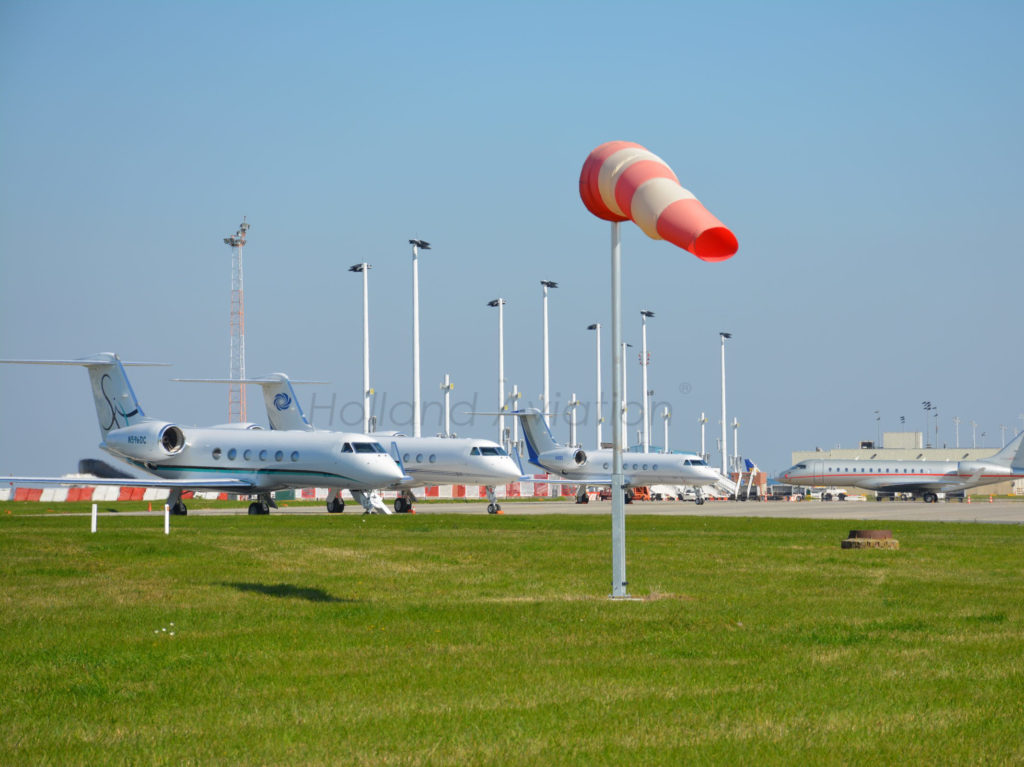A windsock is a connicol shaped textile tube, which resembles a giant sock. Hence it’s name: windsock. It’s designed to indicate wind direction and relative windspeed. It’s normally placed next to the runway or a helipad, so that pilots can easily see it after landing up on the runway or coming in for landing. It’s also indicated on most airport groundcharts with a specific symbol, that resembles the shape of a fully blown windsock.
What is an aviation windsock used for?
The general purpose of an airport windsock is to give the pilot a quick reference as to where the wind is coming from and the aproximate wind speed. Before accelerating before take-off, you take a quick glance at it, so you can give the necessary rutter input while stroling down the runway.
How can you determine wind direction?
To determine the wind direction, you look at your compass, check your heading and then estimate the pointing angle of the windsock relative to your heading. The wind direction is the opposite of the direction in which the windsock is pointing. Which means, if we had the wind blowing from the West at 270 degrees with 10 knots for example, the windsock would point towards heading East, because of the direction it is blowing in.

How can you read windspeed?
Why do most windsocks have these red and white rings? They are there to measure the wind velocity. Each ring indicated a wind speed of 5 knots. Therefore, the maximum wind speed a windsock can measure is 25 knots. The windsock will start tilting at a certain point, so that only a certain amount of rings are fully blown up. However, it’s often seen that a windsock will be fully blown for short periods of time. This indicates that there are gusts of wind that a pilot should take into account.
Aviation windsock requirements
Again, an aviation windsock is only for a quick reference. If you want a proper wind information as a pilot, you would have to listen to the ATIS or ask tower control. You can see they are fairly easy to interpret and a great help to get a quick wind information. They are easy to install ánd cheap to maintain. And it’s required by flight regulations that even the smallest airport has at least one visible windsock.
